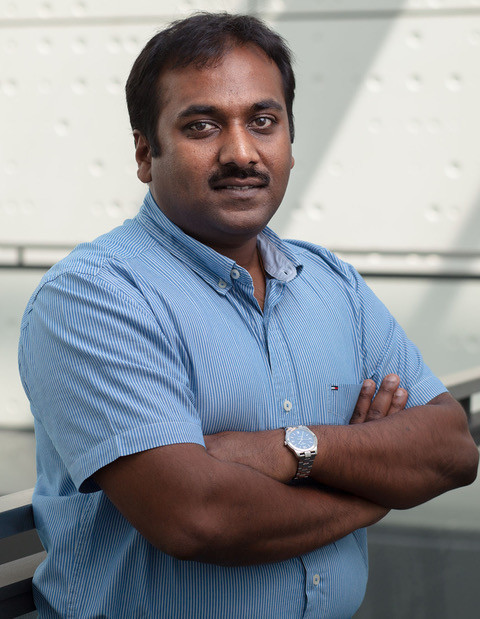Dr Nirmal Robinson Interview
Interview with Dr Nirmal Robinson whose research is funded by the NRF and is focused on the fatal brain cancer, Glioblastoma.

What motivated you to pursue this area of research? What did you study?
All kinds of living organisms and cells experience various forms of stress that affect their life span. However, their ability to overcome stress help them to survive. Cancer cells typically live in an environment which is limited for nutrition and oxygen (hypoxia) which is very stressful. How cancer cells survive in such stringent conditions has always intrigued me. Hence, my research interest has been in understanding the fundamental mechanisms that enable cancer cells to thrive in these hostile conditions so that they can be specifically targeted to treat cancer.
We have specifically deciphered that glioblastoma (GBM) cells have developed mechanisms that help them to thrive under hypoxia. Importantly, these mechanisms also render GBM cells resistant to therapies. Our investigations have led to the identification of specific proteins which can be targeted to inhibit their ability to adapt and overcome drug resistance.
Tell me about this new research project - what are you looking for and why?
Endoplasmic Reticulum (ER) are structures within cells where proteins are produced and has a central role in maintaining cellular equilibrium. Hypoxia persistent in the tumour or caused by therapies perturbs production of proteins and also results in the accumulation of proteins which are not formed properly. This damages the ER (ER-stress) which is destructive to normal cells.
We have discovered that GBM cells overcome ER-stress by rapidly degrading stressed parts of ER in vesicles known as autophagosomes which is known as ER-phagy. We propose that inhibiting ER-phagy using a drug identified in my laboratory in combination with currently available therapies could be an efficient alternative therapeutic strategy to treat GBM.
What do you hope your research will achieve and why?
I hope that our research will provide an alternative and effective therapeutic strategy to treat GBM and also prevent them from developing resistance to the already available chemotherapies.
What are some of the key statistics regarding glioblastoma in Australia?
Glioblastoma is a rare cancer, but it causes high rate of morbidity. Cancer Australia states that the estimated number of brain cancers diagnosed in Australia in 2020 is 1,879. There is no specific information on glioblastoma available in detail annually. In 2013, 982 new cases of glioblastoma in Australia were recorded. More elderly males (median age 65) are diagnosed with glioblastoma (58%).
What is one thing that people do not understand about brain cancer that you would like to communicate to a broader audience or raise awareness of?
Our research clearly shows that brain cancer cells (GBM) are capable of growing in very stressful conditions, as they have developed mechanisms such as ER-phagy, which enables them to rapidly destroy cellular components that are damaging to the cells. Our fundamental research on understanding how GBMs respond to stress such as hypoxia has also allowed us to frame a novel therapeutic strategy.
Therefore, I would like to raise awareness to support research that is focussed on understanding the fundamental mechanisms that separate cancer cells from normal cells so that, we could specifically target cancer cells without damaging the normal cells. Moreover, this will rapidly facilitate drug discovery based on established empirical evidences.




